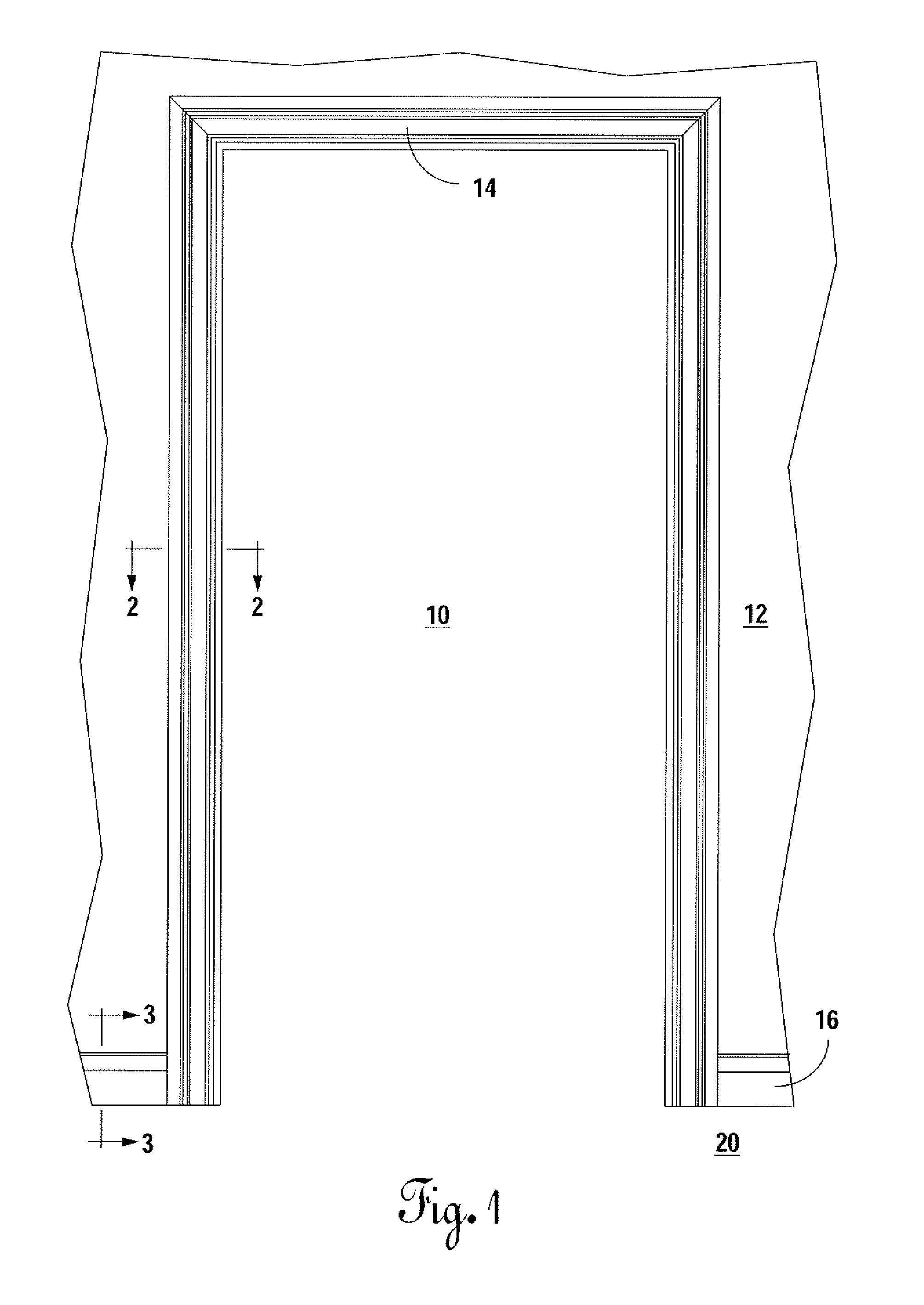Alternative molding system and method of installation
a molding system and installation method technology, applied in the direction of walls, constructions, building components, etc., can solve the problems of difficult to pick up discrepancies, difficult to achieve aesthetically pleasing, complicated molding,
- Summary
- Abstract
- Description
- Claims
- Application Information
AI Technical Summary
Benefits of technology
Problems solved by technology
Method used
Image
Examples
Embodiment Construction
[0039]An embodiment of the present invention is illustrated in FIG. 1. FIG. 1 is a front elevation view of a doorway 10 in a wall surface 12 that has a doorway overlay 14 therearound and a baseboard encapsulate 16 extending therefrom. The baseboard encapsulate 16 is abutted against the wall surface 12 and meets with a floor 20.
[0040]A cross-sectional view of FIG. 1 along section lines 2-2 is depicted in FIG. 2. The doorway overlay 14 attaches and thus covers the existing doorway molding 18. A side edge 26 of the doorway overlay 14 aligns distantly from the doorway 10. The 16 recessed abutting inside portion 24 of the doorway overlay 14 is disposed over a length 130 of the existing doorway molding 18 and attaches along vertical and upper horizontal peripheral edges of the doorway 10 by a pair of vertical members (not shown). A corner formed by a wide end 126 and the length 130 of the existing doorway molding 18 is bedded into and recessed inside a corner 30 of the doorway overlay 14....
PUM
 Login to View More
Login to View More Abstract
Description
Claims
Application Information
 Login to View More
Login to View More - R&D Engineer
- R&D Manager
- IP Professional
- Industry Leading Data Capabilities
- Powerful AI technology
- Patent DNA Extraction
Browse by: Latest US Patents, China's latest patents, Technical Efficacy Thesaurus, Application Domain, Technology Topic, Popular Technical Reports.
© 2024 PatSnap. All rights reserved.Legal|Privacy policy|Modern Slavery Act Transparency Statement|Sitemap|About US| Contact US: help@patsnap.com










